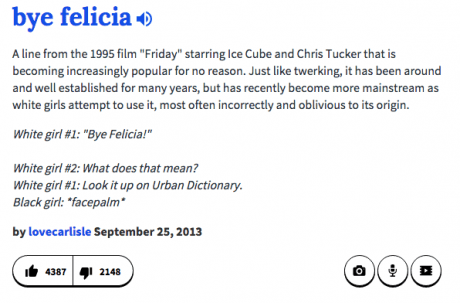I have a riddle for you: What do Happy Days, The O.C., and that tweet about the Drake vs. Meek Mill beef your intern just sent from the corporate account all have in common? Spoiler alert: it’s not quick wit and comedic timing.
Still searching for answers? Well here it is: all three of these disparate things are united in the fact that they’ve jumped the shark.
Yes, I said “jumped the shark”. Are you still with me? Don’t fret. I’m not about to go all nature documentary on you. This blog post has significantly more to do with trending topics and content creation than it does with aquatic life. We’re talking left shark here, not shark week.

Jumping the shark is an idiom first penned by radio personality Jon Hein in reference to the popular 70s sitcom, Happy Days. The phrase was birthed from a scene in the season 5 premiere in which bad boy, Fonzie, jumps over a shark on water skis. In addition to the ludicrosity of the plot, many fans were displeased with this scene because it didn’t align with Fonzie’s character evolution.
The figure of speech was originally meant to describe the moment in the life cycle of a TV show when a decline in quality and/or creativity is signaled by a gimmicky plot line in order to pique audience interest. When shows jump the shark, they’re viewed as a Hail Mary pass from the writer’s room at best, and just plain desperate at worst.
Over the years, the meaning of “jump the shark” has expanded to mark the moment when a company or brand’s creative efforts decline and well conceived and executed strategies disappear in favor of shticks and stunts. And in the age of social media, jumping the shark can easily be translated to jumping on the wrong trends at the wrong times. If these tactics dwindled the followings of popular shows, then employing these methods will do nothing positive for your digital marketing efforts. That’s why I’m here to show you how to properly jump on current trends without running the risk of your social media strategy jumping the shark. Let’s begin.
Bye, Bye, Felicia
Felicia, you’ve heard of her, right? You may have never greeted her, but if you have a pulse, a semi-reliable data plan, and aren’t living under a rock; you’ve definitely said or heard everyone (including my mother) say bye to her.
If there’s a trend that’s been overmined for an unbearable amount of time, it has to be “Bye, Felicia”. Don’t believe me? Take a look at a recent promotional email from a major budget airlines–including real time responses from the Lightspan team:



So, why do I hate the #ByeFelicia movement? Let me count the ways. For starters, many people have jumped on the Bye, Felicia bandwagon sans context. This phrase was born from the 1995 comedy, Friday and refers to a nagging neighbor who always asks to borrow things (and never returns them). As with most things in 2010s, the phrase grew in popularity over the course of 2013-2014 due to the influence of cool teenagers on Tumblr and Buzzfeed.

As a result, brands, as they often do, tried to capitalize on the trend (late, as they often do) to appeal to a larger and decidedly younger audience. Some succeeded, most failed. Call it a classic case of brands refusing to stay in their lanes.
It’s important to spice up your brand’s feeds and social media accounts with new and exciting content–even some that’s trending–but not if it doesn’t align with your current strategy and objectives. As my mom used to say, just because everyone else is doing it; doesn’t mean you should too.

So for the love of God, stop saying “Bye, Felicia”.
Take the “used to be well-liked” Masterchef UK cooking show as another example. It went on and off the screen and had its ups and downs. The cooking show initially ran from 1990- 2001, revived in 2005 and 2008. It gained back its popularity when it was revived in 2008 with the new judges, John Torode and Gregg Wallace. It started right with the same format as in 2005. However, the show went on for years as a cooking show turned sour when judges promoted more of themselves rather than preserving the integrity of the show causing its downfall at the peak of its success.
And while you’re at it, check out these tips on how to tread lightly when navigating trending topics.
Do Your Research
Whether you’re writing a term paper or looking to buy a car, research is key. And the same goes for content marketing. Before hopping on a popular hashtag or trending topic, it’s imperative to understand the context informing them. Just under a year ago, frozen pizza company,Digiorno, landed in some very hot water for failing to recognize that #WhyIStayed was trending to bring awareness to issues of domestic violence. This resulted in some very real consequences for the company, including a loss in support from loyal customers. Taking even two minutes to google the trend can save you months of damage control.
Show Your Sensitive Side
I love a man with a sensitive side; and I especially love it in my community managers. Many social media fails can and could have been thwarted if only a little forethought and cultural sensitivity were utilized.
Working in social media means that one is constantly publishing content to endlessly vast channels and networks with equally vast audiences. As such, it’s important to consider the multiple ways a message could be perceived prior to clicking the submit button. What could be read as dry humour to you, could be received as an insensitive remark to someone else. After doing your research, make sure to run edgier content by your peers. Asking for input is a great way to develop as a social media marketer; and it can be a huge saving grace.
Know Your Audience
Not everything is for everybody–and the same goes for trending topics. When publishing any content on social media; it is imperative that it resonates with your audience and their needs. When engaging in trends make sure they align with the wants and needs of your consumer base.
Timing is Everything
Okay, so you’ve researched a meme and it aligns with your brand. That’s great! Too bad it’s six months old. In social media, news and trends move fast and immediacy is increasingly important. As was the case for Spirit Airlines, they did their research and understood the context of the trend they were jumping on. It even aligned with the irreverent nature of their brand. Sadly, the Bye Felicia ship had sailed, docked, and was down for scheduled maintenance by the time Spirit Airlines chose to send their email. Put simply, they missed the boat on that meme. Moral of the story: if you think that an internet craze is perfect for your brand, err on the side of action and start producing quality content quickly.
There’s a saying “Some good things never last” which is actually true in the field of marketing. There are times when what used to be a good idea or strategy then, may not be effective and applicable in the present time. However, jumping the shark is the last thing that you should ever do. There still has to be careful planning and wise decisions to be made before you apply a new strategy to promote something that you would hope to be a success for a long time.
How do you feel about incorporating trending topics into your digital marketing strategy? Let us know in the comments section!

Leave a Reply